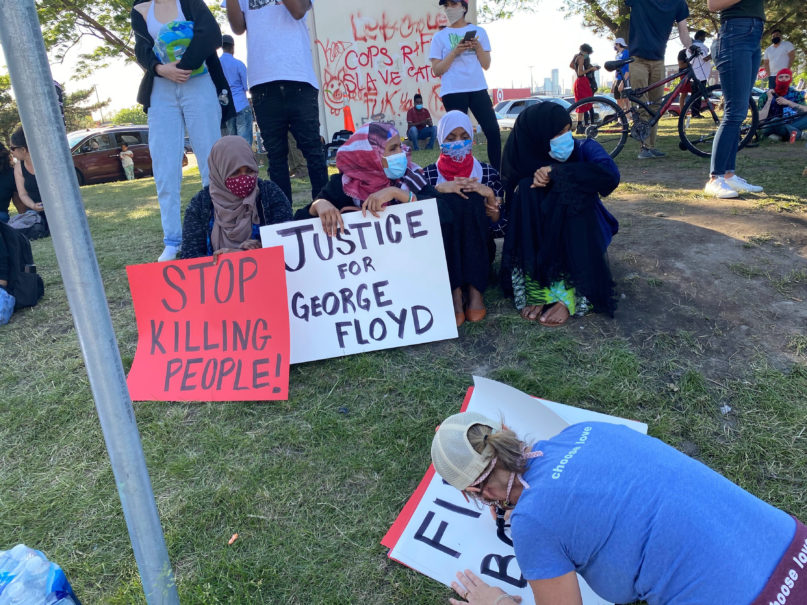Shortly after I moved to Atlanta almost two decades ago, I learned a valuable lesson in Southern Jewish etiquette.
You can discuss anything in polite company. Politics, sex, and money — all good.
Except for one subject.
That would be Leo Frank — the only American Jew to be lynched. (The essential book on the case — And The Dead Shall Rise by Steve Oney).
In 1913, Leo Frank managed the National Pencil Company in Atlanta.
In August of that year, a thirteen year old worker, Mary Phagan from Marietta, Georgia, was found murdered in the factory. As a Northerner and a Jew, Frank was automatically, doubly, the Other, and automatically the suspect.
Frank was arrested for the crime and brought to trial. The mobs in the street screamed: “The Jew is the synagogue of Satan!” “Crack that Jew’s neck!” “Hang that damned sheeny!'”
The jury needed less than four hours to convict Frank. They sentenced him to death. A round of appeals lasted nearly two years. The case became a national cause celebre.
When Frank finally lost the appeal, Georgia Governor Frank Slaton commuted his death sentence to life imprisonment.
Leo Frank was transferred to the state prison farm at Milledgeville, southeast of Atlanta. On the afternoon of August 16, 1915, a group of twenty-five men, who styled themselves the Knights of Mary Phagan, drove from Marietta to Milledgeville.
Breaking into the prison farm, they abducted Frank. Early the next morning, they hanged Leo Frank from a massive oak tree in Marietta. It took him nearly ten minutes to die. The murderers were community leaders from prominent families – among them, a judge. They dressed in fashionable three piece suits.
The murderers posed proudly for photographs, with the corpse still hanging from the tree. Those photographs became postcards which, along with pieces of the rope that hung Frank, were sold as souvenirs.
In the wake of the lynching, there was a wave of anti-Jewish violence in Atlanta and Marietta. Jewish merchants were expelled from Marietta. Many Jews fled Atlanta, never to return.
The Leo Frank case was the primal trauma of Southern Jewry.
Since that ugly day in 1915, these are the Jews who have died as a result of anti-Jewish violence on American soil.
- Alan Berg, the Denver talk radio host, killed in 1984 by members of the white nationalist group The Order.
- Rabbi Meir Kahane, assassinated by a terrorist, in New York City in 1990.
- Yankel Rosenbaum, killed during the Crown Heights riots in 1991.
- Ari Halberstam, 16, riding in a van of Chabad students, shot to death in 1994 on a ramp, which has been renamed in his memory, leading to the Brooklyn Bridge.
- The victims of the attack on El Al at Los Angeles International Airport in 2002 — Victoria Hen and Yaakov Aminov.
- Pamela Waechter, director of the Seattle Federation annual fundraising campaign, who was shot to death in the Seattle Federation offices in 2006.
And then, of course, the eleven murder victims at Tree of Life Synagogue in Pittsburgh in 2018, and the murder of Lori Kaye at Chabad at Poway in 2019.
And, Mindy Ferencz and Moshe Deutsch, murdered at a kosher grocery store in Jersey City, NJ, in December, 2019.
And, Rabbi Josef Neumann, murdered in Monsey, NY. during a Hanukkah party in 2019.
Yes, there were also non-Jews who died in attacks aimed at Jewish institutions, such as the attack on the Jewish Community Center of Greater Kansas City and Village Shalom in 2014.
If I have calculated correctly, the total number of Jews killed for being Jewish on American soil is 23.
Not to mention the non-lethal but violent attacks on Orthodox Jews in New York City. Not to mention the synagogue desecrations. Not to mention the fact that the number of antisemitic incidents in the United States has risen sharply over the last few years — in record numbers.
Now, let us go to the African American statistics.
According to the Tuskegee Institute, there were 3446 African Americans lynched between 1882 and 1968.
The number of African American victims of police violence, since 2015? 1252.
These numbers are only illustrations, and grim ones at that.
We cannot hope to truly measure the number of African American victims of racism.
American Jews experience the wave of violence against Jews as the continuation of the darkest moments of Jewish history.
As one long pogrom.
American blacks experience the wave of violence against them as the continuation of the darkest moments of American history.
As one long lynching.
Antisemitism is the yetzer ha-ra, the evil inclination, of Western civilization.
Racism is the yetzer ha-ra, the evil inclination, of American civilization.
Or, to put it another way: America didn’t need Jews to be its Other. It already had its blacks.
What should we American Jews be saying now?
Let us reach out to our black friends, neighbors, colleagues, and relatives.
Let us say this: “I cannot pretend to know how you feel. But, I can imagine how you feel, because I and my people have often felt the same way. I see you, I hear you, I feel you, and I will do whatever I can, howbeit something small, to heal this.”
I think of the words of the late author, Julius Lester, who was an African American Jew.
“We Jews have taken our suffering, and offered it as a long-stemmed rose to humanity.”
Julius Lester knew that the rose is a thing of uncommon beauty, and that the beauty concealed thorns.
Julius Lester was saying: Those who suffer have a moral obligation to make sure that they understand their suffering as a lesson to the world, and also to themselves. It is a lesson that forbids silence in the face of oppression.
Anything less is a mockery of that pain.






